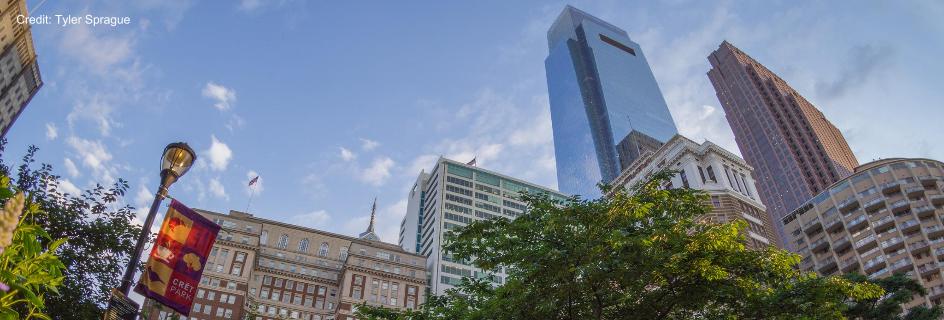- About GPA
- Global Events
- GLOBAL NEWS FROM PHL
- Global Directory
- World Heritage City
- Sustainable Development Goals (SDGs)
- Global Philadelphia Role on Sustainable Development Goals
- Completed Sustainable Development Goals
- SDG#1: No Poverty
- SDG #2: Zero Hunger
- SDG#3: Good Health & Well-Being
- SDG#4: Quality Education
- SDG#5: Gender Equality
- SDG#6: Clean Water & Sanitation
- SDG#7: Affordable and Clean Energy
- SDG #8: Decent Work and Economic Growth
- SDG #9: Industry, Innovation, and Infrastructure
- SDG#10: Reduced Inequalities
- SDG#11: Sustainable Cities and Communities
- SDG#16: Peace, Justice and Strong Institutions
- SDG#17: Partnerships for the Goals
- Press
Home ›
On International Day for Monuments, City Hall Shines As Global Beacon
Posted on April 22, 2015

Tyler Sprague, for GPA -- In observance of the International Day for Monuments and Sites on April 18, Philadelphia celebrated City Hall’s status as a designated heritage site by the International Council of Monuments and Sites (ICOMOS).
Rising from the earth halfway between the Schuylkill River to its west and the Delaware River to its east, Philadelphia’s City Hall is remarkable from various perspectives.
Appreciators observe that City Hall is emblematic of the French Second Empire architectural style. City Hall exudes a sense of character, symmetry and a lavish attention to detail. To engineers, City Hall is a marvel of humanities’ ability to construct elaborate edifices utilizing natural materials, skilled craftsmanship and skill. The construction project itself attracted craftsmen from all over the United States and many nations of the world. Skilled masons from Europe were captivated by Philadelphia’s prodigious endeavor of City Hall’s construction.
Many of the immigrants who worked on City Hall hailed from Italy. They made some of the most significant contributions to the masonry of the building. Along with other skilled masons from throughout the United States, the European continent and Philadelphia’s own neighborhoods, these masons laid the 88 million bricks which form the core structure of City Hall.
Within the North Portal, roughly 250 bronze and marble statues embellish the façade. Uniquely cast capitals rest atop five of the solid granite pillars within the grandiose ceremonial entrance. Individually, the capitals represents architecture, music, engineering, science and nautical transportation.
Continuing toward the courtyard, two reliefs top the second-story balcony’s arched opening and stand above the entablature. The relief on the left depicts a ballot box and the act of voting (a popular ideal for the young nation), while the relief on the right portrays the scene of a teacher and pupils.
Underneath the balcony through a narrow corridor, a foyer emerges at the end of the dimly illuminated passageway. It houses five more uniquely cast capitals. Each contains a series of busts representative of the peoples found within the four corners of the world. To the north are representations of those with European heritage; to the south are peoples of African heritage; to the west, Native American heritage; and to the east, Asian heritage. The individual busts are seen in various positions holding the immense weight of City Hall, as expressed upon their shoulders while their facial expressions imply a profound sense of stoicism.
The corner opposite of the cornerstone gives rise to a fifth column. Upon this capital are the mixed-heritage children from these diverse peoples. The children are posed in a stance as if rising to their feet in an effort to assume the weight of City Hall, give thanks to the tremendous accomplishments of prior generations and to one day lift the building and all of humanity to greater heights.
As the tour on International Day made clear, City Hall is more than a building. It is a towering allegory for Philadelphia’s rich global heritage—a product of the melange of cultures and the residents of a city who collectively make up a vibrant cosmopolitan community. To Philadelphia, the 37 foot statue of William Penn atop City Hall is an iconic part of the skyline. To the world, William Penn is a global beacon of all the opportunities which the city offers.
To view more images, visit Global Philadelphia's Flickr page.







